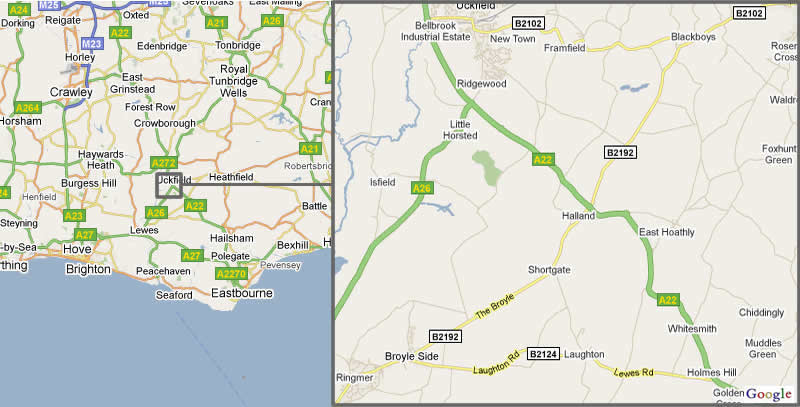The name "Halland" is possibly derived from the Medieval "Halle Land" (Land belonging to a manor), probably the manor of nearby East Hoathly.
Halland is a small straggling village on the A22 London to Eastbourne main road. The village is located on a cross road, what is now a roundabout, where the Heathfield to Lewes road crosses the A22.
Until the late 1890s Halland was known as The Nursery.
There are two legend about Terrible Down and why it came to be named that way. The first is that Alfred the Great fought the vikings here and that the slaughter was so terrible that the streams ran red with blood. The second is that Henry III'd army that was defeated at the battle of Lewes by Simon de Montfort turned to face their pursuers at Terrible Down, and were cut down to a man.
Halland has been dominated by the Pelham family from about 1595 to 1768. In 1356 at the battle of Poitiers a knight from Laughton Sir John Pelham together with Sir Roger De La Warr captured Jean the King of France, because of this the Sir John was given the Kings belt buckle as a badge of honour. This badge can be seen in many churches in the area showing the influence and power of the Pelham family. ( see Laughton and East Hoathly ) In 1595 the Pelham family built a new house in Halland because the "air was nicer" presumably less damp than in Laughton as it lies lower in the valley.
The area was tied to the Iron Industry as it is close to the Waldron and Heathfield furnaces and the charcoal works at Blackboys the results are visible as there are iron milestones in the area with the Pelham Buckle on them. The village was probably used as a resting point for the teams of oxen pulling the completed cannons to Lewes.
The Pelhams left Halland in 1768 to move to Stanmer, possibly due to the air polution from the nearby furnaces, Halland Place was demolished and used for building materials.
|
